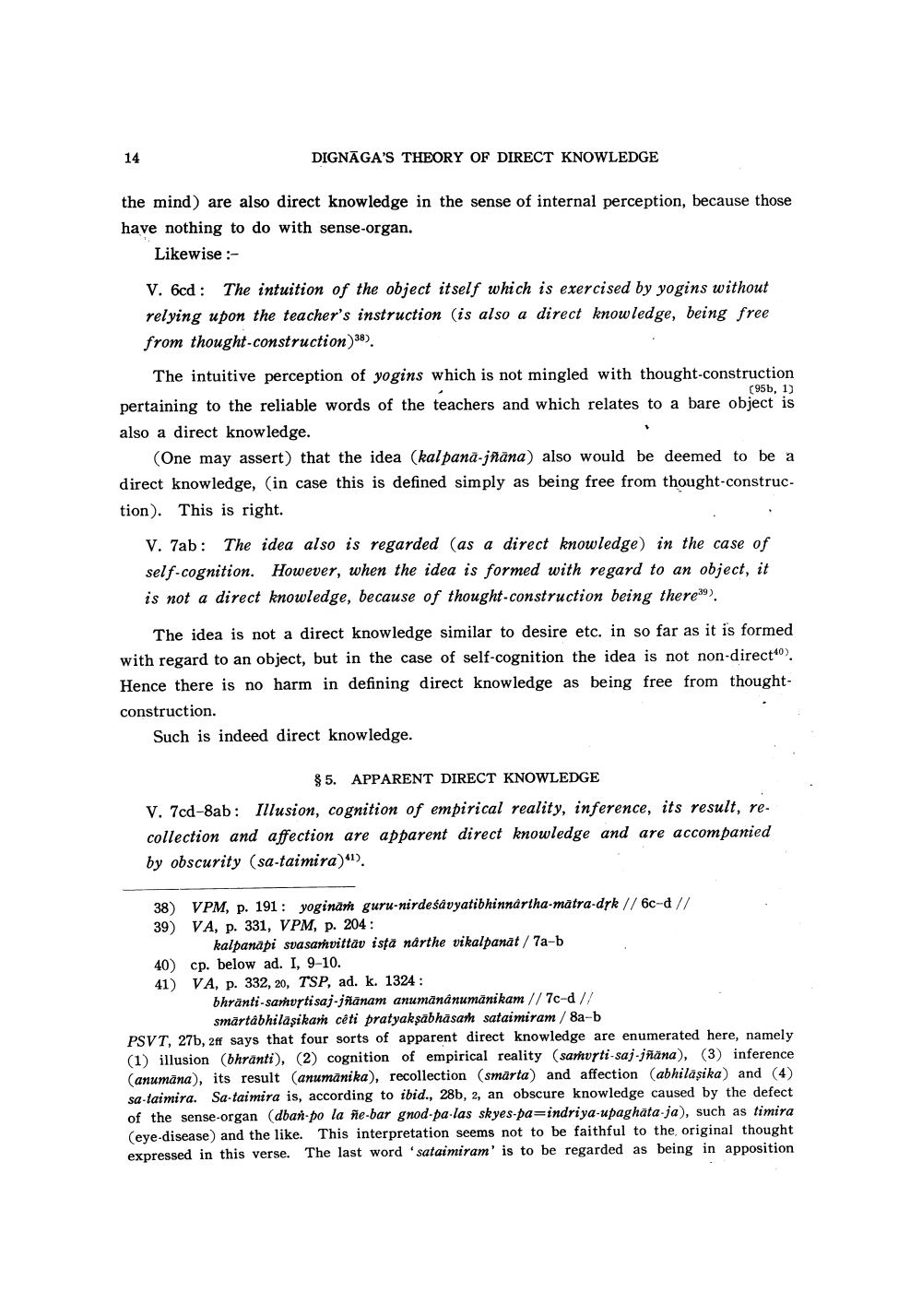________________ 14 DIGNAGA'S THEORY OF DIRECT KNOWLEDGE the mind) are also direct knowledge in the sense of internal perception, because those have nothing to do with sense-organ. Likewise : V. 6cd: The intuition of the object itself which is exercised by yogins without relying upon the teacher's instruction (is also a direct knowledge, being free from thought-construction)38). The intuitive perception of yogins which is not mingled with thought-construction (95b, 1) pertaining to the reliable words of the teachers and which relates to a bare object is also a direct knowledge. (One may assert) that the idea (kal pana-jnana) also would be deemed to be a direct knowledge, (in case this is defined simply as being free from thought-construction). This is right. V. 7ab: The idea also is regarded (as a direct knowledge) in the case of self-cognition. However, when the idea is formed with regard to an object, it is not a direct knowledge, because of thought-construction being there39). The idea is not a direct knowledge similar to desire etc. in so far as it is formed with regard to an object, but in the case of self-cognition the idea is not non-directo). Hence there is no harm in defining direct knowledge as being free from thoughtconstruction. Such is indeed direct knowledge. 85. APPARENT DIRECT KNOWLEDGE V. 7cd-8ab: Illusion, cognition of empirical reality, inference, its result, recollection and affection are apparent direct knowledge and are accompanied by obscurity (sa-taimira)"). 38) VPM, p. 191 : yoginam guru-nirdesavyatibhinnartha-matra-drk // 6c-d // 39) VA, p. 331, VPM, p. 204: kalpanapi svasamvittav ista narthe vikalpanat / 7a-b 40) cp. below ad. I, 9-10. 1) VA, p. 332, 20, TSP, ad. k. 1324 : bhranti-samurti saj-jnanam anumananumanikam // 7c-d // smartabhilasikar ceti pratyaksabhasai sataimiram / 8a-b PSVT, 27b, 2ff says that four sorts of apparent direct knowledge are enumerated here, namely (1) illusion (bhranti), (2) cognition of empirical reality (sarvrti-saj-jnana), (3) inference (anumana), its result (anumanika), recollection (smarta) and affection (abhilasika) and (4) sa-taimira. Sa-taimira is, according to ibid., 286, 2, an obscure knowledge caused by the defect of the sense-organ (dban-po la ne-bar gnod-pa-las skyes-pa=indriya-upaghata-ja), such as timira (eye-disease) and the like. This interpretation seems not to be faithful to the original thought expressed in this verse. The last word 'sataimiram' is to be regarded as being in apposition




